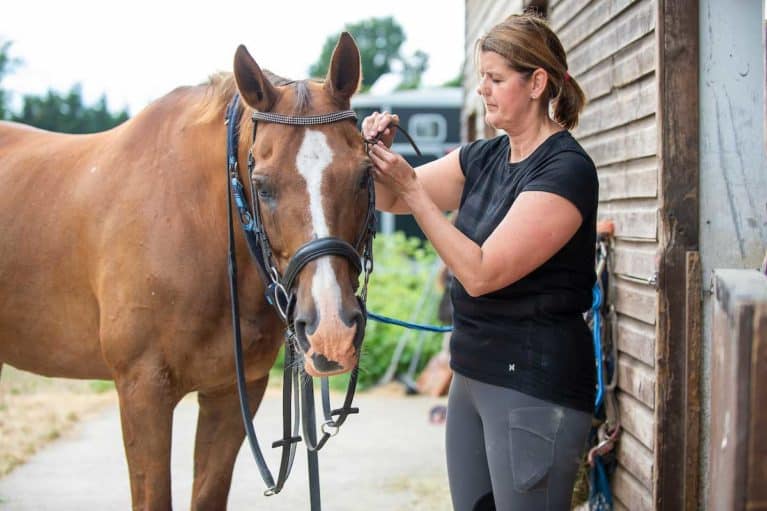With so many bits available on the market, how can you pick the perfect option for your horse? Richard Brown answers your burning bitting questions

Bitting is quite a personal subject for many riders, and a cursory glance at your local horsey Facebook page will show that everyone has their own opinions surrounding bits. We all turn to our friends and other liveries for help when finding the perfect feed, rug or set of boots for our horses – but there’s no harm in consulting an expert. Richard Brown of Abbey Bits is on hand to solve some common bitting problems.
TOP TIP
When faced with any bitting problem you must look at your horse as a whole – checking his teeth, back, saddle and any other factors that might affect him, such as your own ability and his level of training. Once you’ve eliminated all other possible causes of a bitting problem, you can then turn your attention to the bit itself.
Q: My horse always leans on the bit, whatever sort of work we’re doing.
Richard answers…
Usually when horses lean on the bit it’s because they’re fitted with a single jointed snaffle, which is pinching due to its nutcracker action. The horse then stiffens his tongue and pushes his jaw out to flatten the bit and stop it pinching. To a certain extent, it could be an issue with the rider allowing the horse to constantly lean on their hands, or that the horse doesn’t understand how to yield to the bit. You also need to consider, especially if he’s young or green, that he might be leaning on the bit and your hands to help him balance. Physical problems, such as a poorly fitting saddle or lameness, could also cause your horse to lean. You need to use a bit that’s comfortable and offers more signals, and this will be more subtle if it has a curve. If you use a jointed bit, such as a lozenge, make sure it has small, neat joints to avoid discomfort.
Q: He throws his head in the air and refuses to work into a contact.
Richard answers…
This is a form of evasion so, similar to your approach with a horse who drops behind the contact, make sure the bit isn’t pinching or uncomfortable. If your horse is happy in his mouth, he should feel confident to take the contact and move forwards. A simple eggbutt snaffle with a mullen mouthpiece and a forward curve could also encourage your horse to lower his head. It can also offer a comfortable alternative to a jointed bit, which may pinch. It’s very important that you have his back and saddle checked first, though, because discomfort here often results in a high head carriage.
Q: My horse puts his head down low and snatches the reins out of my hands.
Richard answers…
A horse carrying out this behaviour may be uncomfortable in his mouth, perhaps the bit is pinching or he has large joints sticking into the roof of his mouth. However, once you’ve determined that your horse isn’t in any discomfort and you’ve eliminated all other possible causes, he’ll need a degree of re-schooling to help him unlearn this behaviour. If your horse tries to snatch the reins, close your hands on the reins without pulling back and send him forwards with your leg. Your horse must learn that during work on a longer reinhe’s allowed to drop his head and neck, but as soon as you pick up the rein pressure he’s not allowed to snatch the reins. Once this has been established and he understands what you’re asking, there’s no reason why he should continue the behaviour.








